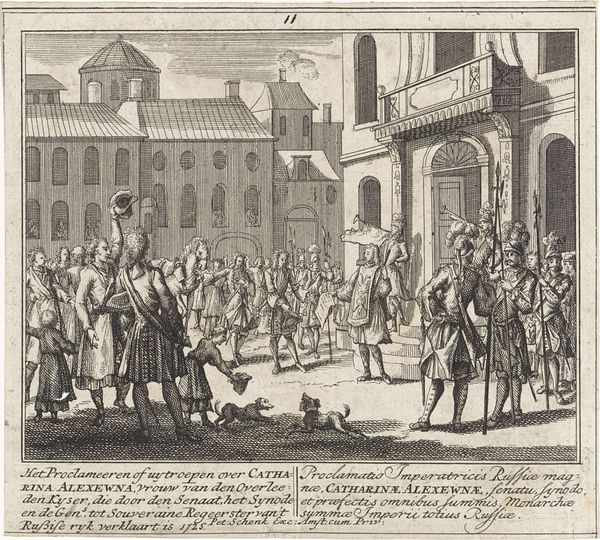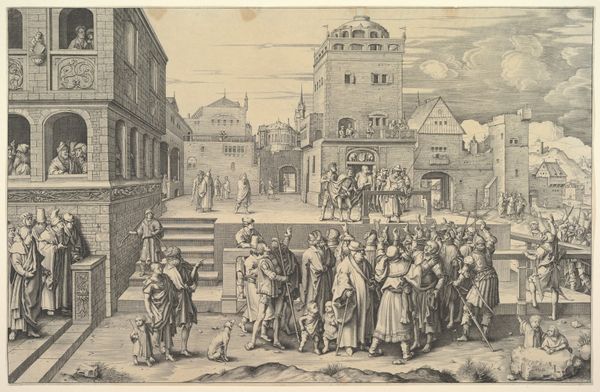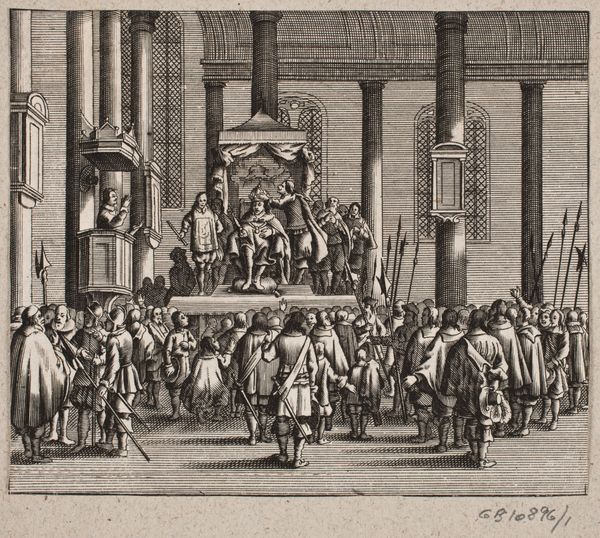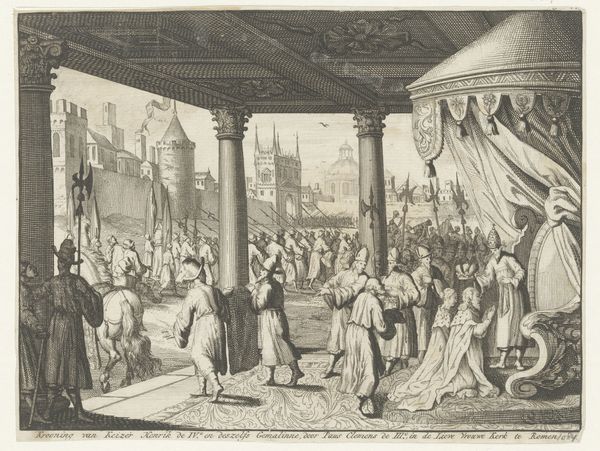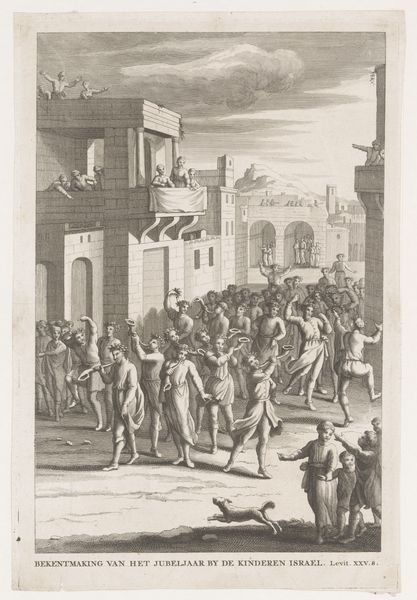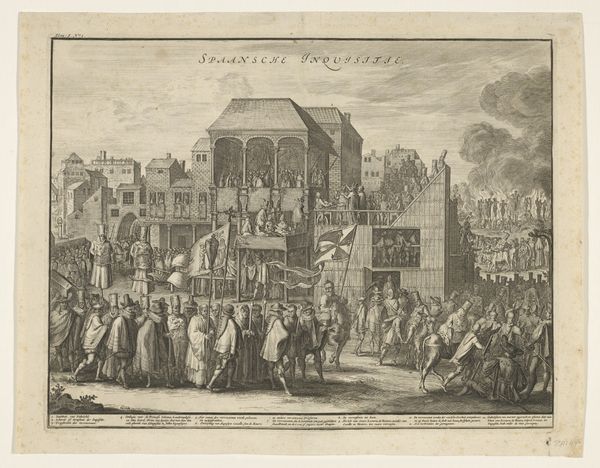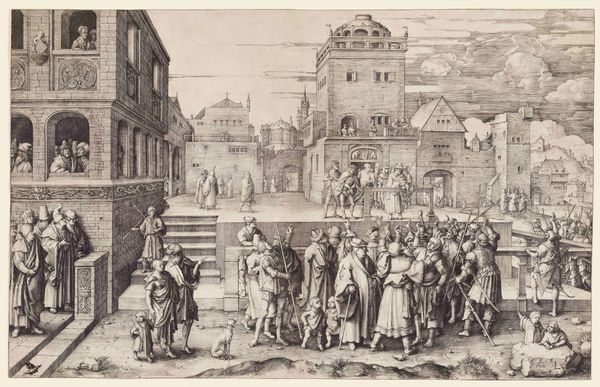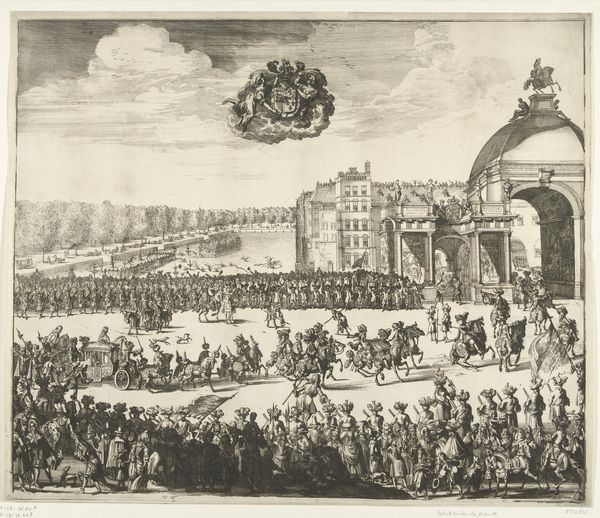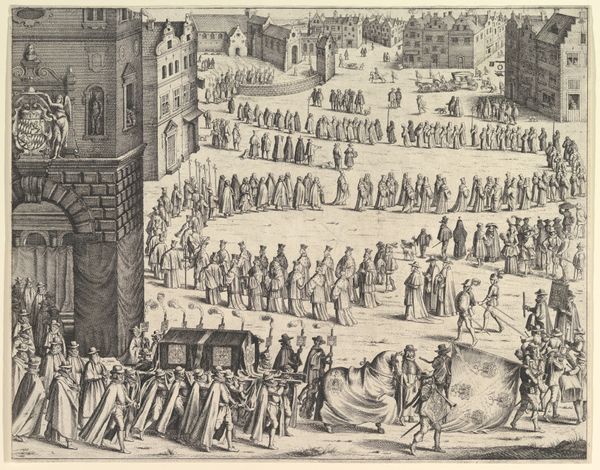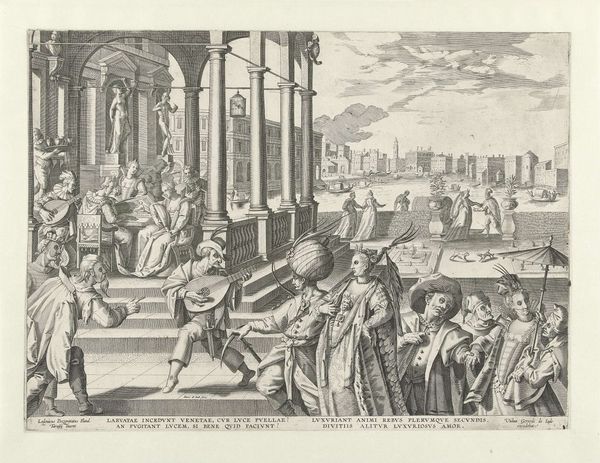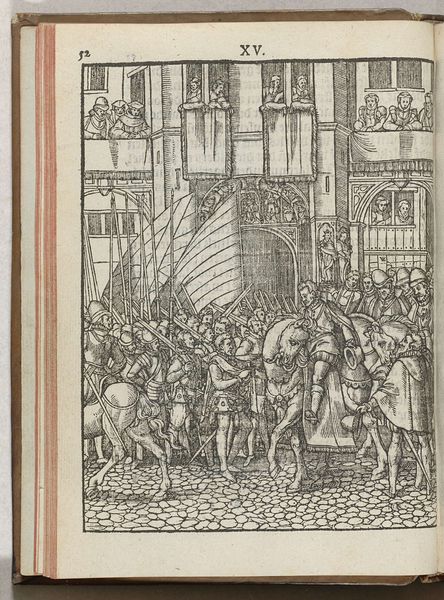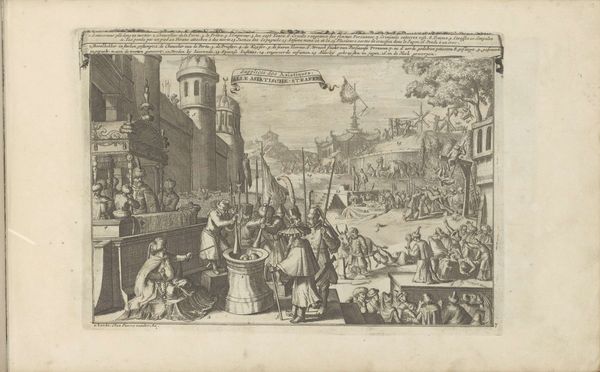
print, engraving
#
dutch-golden-age
# print
#
figuration
#
line
#
cityscape
#
genre-painting
#
history-painting
#
engraving
#
realism
Dimensions: height 112 mm, width 147 mm
Copyright: Rijks Museum: Open Domain
Editor: This engraving, "Leprozenoptocht op Koppermaandag te Amsterdam, 1604", made in 1693 by an anonymous artist, shows quite a crowded scene. I’m struck by the stark contrast between the festive air and the grim reality of the lepers' procession. What aspects of Dutch society do you think this artwork reveals? Curator: This print, while seemingly documenting a local tradition, presents a complex socio-political commentary. Consider Koppermaandag, or Copper Monday, traditionally a day of celebration for printers, set against the backdrop of a lepers' parade. Who is allowed to celebrate, and who is not? This creates an immediate dichotomy between the included and the excluded. The visual representation of leprosy also brings forth themes of ableism, highlighting the physical markers of the disease and their segregation from society. Editor: It's hard to imagine a parade of people with leprosy being festive, more like a social ill put on display. How might this image speak to social justice concerns of the time? Curator: Precisely. We have to read this image with a critical eye. Are we celebrating inclusivity, or merely parading those who are "othered" for social spectacle? The lepers are not just victims of disease but are also victims of a societal structure that stigmatizes and isolates them. This print invites us to reflect on the power dynamics within 17th-century Dutch society and how marginalized communities were both visible and yet simultaneously invisible. Who is this piece really made for? Editor: So, beyond the historical documentation, it challenges us to think about visibility, marginalization, and social responsibility? Curator: Exactly. It's a call to investigate the historical and ongoing ways in which society constructs notions of normality and otherness, who benefits from this division, and whose voices remain unheard. The layering of traditions here provides fertile ground for understanding the tensions and negotiations surrounding health, class, and social standing. Editor: I hadn’t thought about it that way. Seeing it as a depiction of visibility and power makes a lot of sense. Thanks for broadening my view.
Comments
No comments
Be the first to comment and join the conversation on the ultimate creative platform.
